

 ost boomer and Gen-X kids remember a childhood filled with hours and hours of playing outdoors. They were shooed out of the house right after breakfast on summer mornings, not to be seen again until lunch, then dinner; after eating, they disappeared again until (depending on the house rules) whenever it was too dark to play. (In my neighborhood, it was when the one streetlight came on.)
ost boomer and Gen-X kids remember a childhood filled with hours and hours of playing outdoors. They were shooed out of the house right after breakfast on summer mornings, not to be seen again until lunch, then dinner; after eating, they disappeared again until (depending on the house rules) whenever it was too dark to play. (In my neighborhood, it was when the one streetlight came on.)
Sure, there were a few organized activities, such as Little League and Pop Warner football, but for the most part, outdoor play was unregulated. In other words, there were no adults telling you how a game had to be played. You could make up your own rules. You could settle your own scores. There might have always been a kid or two who tried to boss everyone around, but for the most part the only “rules” were the tacit ones of the playground, and even those were subject to the fluctuating moods and whims of the neighborhood crowd.
These were the good old days when you drew straws to decide who would be “it” and “that rock over there” was an acceptable second base. They were the days when “riding bikes” was an all-day activity, and parents didn’t fret for a moment if their kids were out of their supervision for hours on end. (If my mother was any indication, I’m pretty sure they preferred it.) These were the days when kids didn’t wear helmets or protective gear. Sure, there were the inevitable spills and scrapes, but serious injuries were rare—and often considered a badge of honor, particularly if a cast was involved. Outdoors was a kid’s world, and with it came a sense of freedom that powered play and self-reliance, and created lifelong relationships—and memories.
It was a time unlike today, when many parents would cringe to think of their kids speeding down the sidewalk on a Big Wheel, or throwing themselves onto a wet plastic sheet and sliding with abandon across the lawn. But if those same parents harken back to their own childhoods, they’ll remember how outdoor games, played without rules, out from under the watchful gaze of parents and other grown-ups, provided a sense of excitement we all craved.
Probably the most popular and enduring outdoor toy introduced in this period was the Frisbee. At the same time, many people recall hours upon hours of fun spent clocking hops on the Skip-It, or organizing backyard games of Wiffle ball, or putting the Super Ball’s amazing bouncing powers to the test.
Today, when getting—or keeping—kids active has become a cultural obsession (thanks in part to the movement to fight childhood obesity, spearheaded by First Lady Michelle Obama) and much of kids’ lives are being increasingly taken up with music lessons and language classes and other organized indoor activities, it’s worth looking back at a time when active play was an everyday occurrence and the outdoors was a kid’s world, limited only by the boundaries of the imagination.
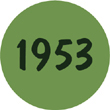
 uring the 1950s the pickup baseball game was a staple of neighborhood play. Yet rare was the kid who had a regulation baseball, and using hardballs in a backyard game was a risky gambit, since any kid who watched the television shows of the period knew what happened when the ball went through the window of the meany next door. Kids tried to play ball with golf balls and tennis balls, and city kids played stickball with pink Spaldeen balls, but none of these really worked very well. Some toy makers made blow-molded (hollow) balls that looked like baseballs, but they couldn’t be pitched. What was a kid to do?
uring the 1950s the pickup baseball game was a staple of neighborhood play. Yet rare was the kid who had a regulation baseball, and using hardballs in a backyard game was a risky gambit, since any kid who watched the television shows of the period knew what happened when the ball went through the window of the meany next door. Kids tried to play ball with golf balls and tennis balls, and city kids played stickball with pink Spaldeen balls, but none of these really worked very well. Some toy makers made blow-molded (hollow) balls that looked like baseballs, but they couldn’t be pitched. What was a kid to do?
Then came the Wiffle ball. According to Wiffle.com, one day, while watching his son and his friends play, David N. Mullany, who had been a college and semipro pitcher, realized that no plastic ball could be pitched like a baseball, especially when it came to curveballs.
After experimenting with different materials, Mullany found that a ball made out of a thicker plastic and injection molded (made in two pieces) rather than blow-molded (inflated), with eight oblong holes along the surface, worked the best. Mullany patented his creation and borrowed some money, and he was in business.
Exactly how it works and why it works are still a mystery, according to the company (for more information, see Wiffle.com/welcome.asp). All we know is that it transformed backyard ball forever.
Over the years, many companies have come up with toy baseballs, but none of them ever worked as well as the original Wiffle ball. It could be a combination of the placement of the holes in the imitators or the cheapness of their plastic, but most of these have been relegated to preschoolers.
The company has branched out into bats, and, naturally, to logo merchandise. The company is private, so we don’t know how many units are sold every year, but the classic Wiffle ball is still the best toy baseball on the market.
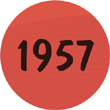
![]() s with many hit toys, the story of the Frisbee’s origin is surrounded by legend. Flying disks have been used as playthings, sporting goods, and even weapons since the days of the ancients. But by most accounts the invention of the modern-day Frisbee was inspired by a bunch of Yale students who made a game out of tossing empty pie plates to avoid studying. The pies came from the Frisbie Baking Company in Bridgeport, Connecticut.
s with many hit toys, the story of the Frisbee’s origin is surrounded by legend. Flying disks have been used as playthings, sporting goods, and even weapons since the days of the ancients. But by most accounts the invention of the modern-day Frisbee was inspired by a bunch of Yale students who made a game out of tossing empty pie plates to avoid studying. The pies came from the Frisbie Baking Company in Bridgeport, Connecticut.
But empty pie plates were not the most aerodynamic of instruments and so, in 1948, Walter Frederick Morrison developed a plastic version that would fly like a saucer and not wobble through the air like, well, a pie plate. He named it the Pluto Platter to capitalize on the public’s then-current fascination with outer space and aliens, and sold it mostly through demonstrations and on college campuses. It was only a modest success.
That is, until 1955, when Morrison teamed up with Arthur “Spud” Melin and Richard Knerr, who had just formed the now-legendary company Wham-O and were marketing their first product—a slingshot. Together, they patented and began to produce and market what we would today recognize as a Frisbee. (Knerr, by the way, is credited with renaming the toy Frisbee, a phonetic spelling of the name of the pie company—and one that wouldn’t infringe on any trademark.)
The Frisbee wasn’t originally marketed as a toy; it was billed as a sport, which, of course, meant that it wasn’t just for kids. Soon after its introduction, the Frisbee became a fixture in parks, on beaches, and virtually anywhere adults and kids alike could play the new game.
The Frisbee didn’t necessarily lend itself to a lot of innovation or product enhancements, but as both its popularity and the level of competition grew, in 1964, Wham-O cleverly introduced the first “professional” Frisbee, which was larger and heavier than the original and, thus, demanded a bit more skill. These professional models were a sleek black and white; the “toy” versions were still produced in a rainbow of colors. A glow-in-the-dark version that could be played at night (and could easily be recharged by placing it over the headlight of a car) was also a hit.
For those unsatisfied with simple throw and catch, Frisbee soon inspired a number of spin-off sports.
Ultimate Frisbee, a combination of football, baseball, and soccer using the disks, came on the scene in 1967, and Frisbee golf, which involved walking a field, trying to toss the disks into Frisbee-sized “golf” holes—chain baskets hanging from metal poles—soon followed, and actually became a recognized sport.
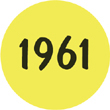
![]() f ever there was a toy that was feared and loved in equal measure, it was the Slip ’N Slide. Naturally kids were enamored of the toy that let them fly across the lawn on a sheet of plastic. Cautious parents, on the other hand, saw only the potential danger. As so often happens in these kinds of things, though, the kids generally won out, and soon the world was divided between those kids who had a Slip ’N Slide and those who were forbidden to play on it.
f ever there was a toy that was feared and loved in equal measure, it was the Slip ’N Slide. Naturally kids were enamored of the toy that let them fly across the lawn on a sheet of plastic. Cautious parents, on the other hand, saw only the potential danger. As so often happens in these kinds of things, though, the kids generally won out, and soon the world was divided between those kids who had a Slip ’N Slide and those who were forbidden to play on it.
But whether you had one or not, for most kids the Slip ’N Slide completely transformed backyard play. Sure, kids had been running under the lawn sprinkler for years as a way of cooling off, and wading pools had been around since the rise of the suburbs at the end of World War II, but the Slip ’N Slide brought outdoor water play to a whole new level.
The toy was nothing more than a long sheet of yellow plastic that had a perforated tube running alongside it. You connected the garden hose to one end of the tube, and a shower of water kept the plastic sheet nice and slippery wet. Kids ran, threw themselves down, and slid all the way to the end. It was like having a water slide in your own backyard.
Obviously, placement of the slide was everything. Adults will surely recall all the time spent scouring the yard for the perfect spot, ideally on a downhill slant with no rocks or twigs underneath. The slide preferably shot you out onto the lawn a good distance from the sidewalk.
Despite the perceived dangers, injuries were few and far between, unless you count the fights that ensued over whose turn it was.
The Slip ’N Slide has never lost its appeal—even to modern-day kids—and fifty years later, it’s still on the market. Of course, today’s versions have gotten more and more sophisticated, some resembling veritable backyard water parks, with everything from tunnels to slides that end in pools. Still, there’s no question that the simple action of sliding across the lawn on a thin sheet of plastic is still the thrill kids love. If only, many have lamented, they made a version for adults.
 , Lemon Twist
, Lemon Twist 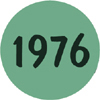 , and Skip-It c.
, and Skip-It c. 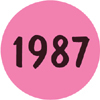
![]() umping rope—and all its variations—is a game almost as old as civilization itself. Wherever kids have had a piece of rope and a little ingenuity, games followed. The Dutch brought jump rope when they came to the New World, and while for many years the fun required a simple piece of rope, in the 1960s industrious toy makers saw an opportunity in making and marketing clever variations on the classic game.
umping rope—and all its variations—is a game almost as old as civilization itself. Wherever kids have had a piece of rope and a little ingenuity, games followed. The Dutch brought jump rope when they came to the New World, and while for many years the fun required a simple piece of rope, in the 1960s industrious toy makers saw an opportunity in making and marketing clever variations on the classic game.
One of the first of these mass-produced toys was the Jingle Jump, which, thanks to the low one-dollar retail price and an infectious TV commercial, quickly became a huge hit. The toy was composed of a long plastic cord with a hollow ball on one end and a piece that fastened around the heel of a shoe on the other.
The idea was to attach the Jingle Jump to one foot, then bend over, pick up the ball and toss it in front of you, and swing the foot to get it spinning. Then you would hop over the cord as the ball went around and around—as many times as you could before the device lost momentum, or you tripped up. Oh, and a small box on the back had a bell inside that—you guessed it—jingled while you jumped. It wasn’t easy, but that was part of the fun, as kids spent hours upon hours trying to beat their record number of hops, and the toy became a kind of minifad for a season.
As tends to happen, success breeds imitation, and soon a similar item called Footsie hit the market. Only instead of the heel contraption, Footsie had a ring that slipped around the ankle. Originally, Footsie had a bell at the end of its cord, but that was changed to a ball later on. Either way, it was certainly easier to use, and kids loved it.
Then in the mid-1970s, Chemtoy replaced the simple ball with a plastic lemon, used green plastic for the ring and cord, and renamed the toy Lemon Twist. Though the toy worked the exact same way as the original, this stylistic tweak was enough to create a whole new minicraze.
Better players quickly learned that the secret to a higher number of jumps was to get a rocking motion going as they shifted their feet—a kind of forward and back hop. Real experts could go almost as long as their stamina held out.
Sadly, by the late 1970s, as video games became an exciting new novelty and kids began spending more and more of their playtime indoors, outdoor games like this fell out of favor. But it was ultimately new safety regulations that brought about the Jingle Jump’s demise. For one, no toy could have a cord more than twelve inches long because of the risk that it could wrap around a child’s neck and strangle them—which was a bit of a problem—unless the manufacturers created breakaway cords.
However, in the late 1980s Tiger Electronics solved that problem by replacing the cord with a hollow plastic rod. They renamed the toy Skip-It, and it became an instant hit. Once again, TV advertising played a huge role in inspiring a new generation of kids to hop to it. Later versions included an electronic counter in the ball, which had the added bonus of resolving many a playground dispute over who had racked up the most hops.
In 2013, the toy is coming back in all sorts of newfangled incarnations, including basic reproductions of the classic toys and the fancier Twister Rave Skip-It, a glow-in-the-dark version that lights up in neon colors as you skip.
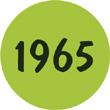
![]() n 1965, the biggest fad of the year was the Super Ball. Yes, it may have looked like just a basic ball, but it had super bouncing powers. Made of a highly compressed synthetic rubber (with the appropriately space age name Zectron) developed by chemist Norman Stingley, and marketed by Wham-O, the Super Ball could leap over a three-story house and shoot back up when dropped from a building, and, if you hurled it in a small room, it would ricochet off the walls for what seemed like a good long time.
n 1965, the biggest fad of the year was the Super Ball. Yes, it may have looked like just a basic ball, but it had super bouncing powers. Made of a highly compressed synthetic rubber (with the appropriately space age name Zectron) developed by chemist Norman Stingley, and marketed by Wham-O, the Super Ball could leap over a three-story house and shoot back up when dropped from a building, and, if you hurled it in a small room, it would ricochet off the walls for what seemed like a good long time.
Perhaps it was the classic appeal of anything that seems to defy physics and logic. Or maybe it was just cool how high the thing bounced. Either way, with the United States in the midst of a space race and enamored of things that went faster, farther, and higher, the ninety-eight-cent Super Ball was just the ticket. More than seven million of them were sold in their first year on the market.
The first Super Ball was about the size of the famous Pinky ball, also known as the Spaldeen, that had been introduced in the 1940s. Essentially a tennis ball without the fuzz, the Spaldeen had been the gold standard for a rubber ball—that is, until the Super Ball bounced into town.
As fun as it was, the Pinky simply couldn’t compete with the Super Ball’s special compressed rubber and its incredible elastic properties. Of course, as with any simple toy, imagination was key, and kids delighted in creating all kinds of games and testing Super Ball’s potential in all kinds of ways: throwing it out of windows, bouncing it off the roofs of houses, and whacking it with baseball bats, to name just a few. Many of the games included trying to get out of the way of the ball as it went zinging past; it could leave a mark if you got hit with it at full speed. Still, that seemed to be part of the fun as well.
According to Wham-O, at the height of the craze, they were turning out Super Balls at a rate of approximately 170,000 a day. But as with all superhot fads, the novelty soon cooled off, and by the end of 1966, the Super Ball fad had lost its bounce.
You’d be hard-pressed to find an original 1965 Super Ball these days. Zectron, the synthetic rubber that gave it its bounce, tended to fall apart. Super Balls also were easily lost and sometimes lost chunks when they hit surfaces at great speed.
In 2009, Maui toys introduced the Hyper Charged Sky Ball, a hollow ball about the size of a softball pumped full of a mix of oxygen and helium that could purportedly bounce seventy-five feet in the air. Produced in transparent jewel-like colors, this modern-day Super Ball became a must-have for a new generation of kids.
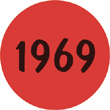
 hen Marx introduced the first Big Wheel in 1969—made of blow-molded plastic with the eponymous oversized front wheel and two smaller back wheels—it was a huge success, and the first innovation on the tricycle in, well, ever. Kids sat in a low-slung seat that could be adjusted as they grew.
hen Marx introduced the first Big Wheel in 1969—made of blow-molded plastic with the eponymous oversized front wheel and two smaller back wheels—it was a huge success, and the first innovation on the tricycle in, well, ever. Kids sat in a low-slung seat that could be adjusted as they grew.
It was not designed for mechanical efficiency. Sitting down low and leaning back, kids who remember riding it around their neighborhoods recall the effort it took to get the darn thing moving. It took a lot of pushing to get rolling. But once it was on the move the sound of those hollow plastic wheels on pavement was unmistakable.
Kids also loved getting it going and then pulling the handlebars sharply to one side to go into a spin. It felt like being a real daredevil, that’s for sure. Parents liked it because it was inexpensive, but they also felt that it was safer than a traditional tricycle, a belief fostered by the Consumer Products Safety Commission.
The look was very much of its time. It’s no accident that the movie Easy Rider was released the same year, and while many of the kids answering the call of the open sidewalk would not have seen the movie, the sense of freedom and “rebellion” of riding the chopper-like plastic toy certainly added to its cachet.
As so often happens in the toy industry, success breeds knockoffs, and though Marx had trademarked the name “Big Wheel,” similar ride-on toys started to flood the market in the early 1970s. By that time, the term “Big Wheel” had become generic. After Marx declared bankruptcy, Empire bought the name and the molds and produced Big Wheel toys for several years, until they, too, folded. Other types of ride-ons had taken over the market.
The brand name “Big Wheel” changed hands at least one more time, though it never was relaunched with any kind of success. The toy was inducted into the Strong’s National Toy Hall of Fame in 2009, meaning that it was certainly a classic, though at the time it seemed as though it was a toy whose time had passed.
Well, not so fast. In 2012, Kids Only!, a division of Jakks Pacific, acquired the rights. They reintroduced the ride-on in time for the summer season, and a new generation of kids discovered the simple fun of this classic.
As part of their promotion, Kids Only! produced two prototype models of the Big Wheel in a size that a contemporary adult could ride. They proved to be so popular wherever they were shown that for 2014, the company decided to put them into production and sell them for $199—or about the cost of twenty of the originals in 1969.
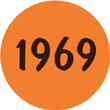
 ow many times throughout your childhood did your mom, her nerves fraying, yell, “Outdoors with that!”? This was often in response to a spirited ball game taking place in the living room, or a near disaster involving your throwing arm and her Hummel figurines. Even for those of us who grew up with the most lax household rules (whose mothers, like mine, just rolled their eyes at their rambunctious kids), playing ball in the house was definitely verboten. That is, until 1969, when the “world’s first official indoor ball” was introduced.
ow many times throughout your childhood did your mom, her nerves fraying, yell, “Outdoors with that!”? This was often in response to a spirited ball game taking place in the living room, or a near disaster involving your throwing arm and her Hummel figurines. Even for those of us who grew up with the most lax household rules (whose mothers, like mine, just rolled their eyes at their rambunctious kids), playing ball in the house was definitely verboten. That is, until 1969, when the “world’s first official indoor ball” was introduced.
Suddenly, not only could kids play basketball, soccer, and even football indoors, they were actually allowed to! Score one for kids; score one for mom; and score many millions for NERF, whose irreverent marketing slogans included “Throw it indoors. You can’t hurt babies or old people.”
Or course, NERF didn’t set out to turn American living rooms into veritable playgrounds. As NERF inventor Reyn Guyer says, “For every great idea, there are usually, oh, several hundred rotten ideas.” In 1969, Guyer and his designers were trying to develop a game similar to Twister (which had been a huge hit for Guyer in 1966), in which players had to avoid stepping on specific squares on a giant game board. To keep other players off the forbidden squares, the designers cut up pieces of foam, which players could then throw at one another. The game itself wasn’t particularly fun, but, as the playful designers soon discovered, throwing the pieces of foam at one another was! (When in the history of play has throwing things at other people not been fun?)
So Guyer and his team fashioned the foam into orange softball-sized spheres, boxed them up, and shipped them to Parker Brothers, who sold more than four million of them in the first year (a huge departure for Parker Brothers, which had primarily been a board game company).
By the mid-1970s the brand NERF had become synonymous with any type of active plaything that could be marketed under the banner “soft, safe fun.” So naturally, that soon came to include “blasters”—which were modeled after various weapons but were plastic, fluorescent, and shot out foam balls. (Parents and antiviolence advocates who were concerned about children playing with toy guns seemed to have no compunction about handing the little ones a blaster.)
In 1989, Milton Bradley’s Blast-A-Ball game was the first to use NERF products as ammunition, and it was an instant hit. After that, the blasters started coming in rapid fires with the dart blaster, the Super Soaker water gun, and the popular NERF Action Blasters Big Bad Bow bow and arrow set, which debuted in 1991. Meanwhile, sports fans could still play ball indoors with NERF night vision footballs or Nerfoop basketball sets.
Advances in materials helped propel the NERF line into the twenty-first century as their use of more sophisticated, compressed foam allowed their balls and darts and discs to fly faster and farther and hit their targets with nearly military precision—while still leaving mom’s souvenir teacup collection unshattered.
Today, increasingly sophisticated blasters are among Hasbro’s top sellers, and its legions of fans include kids and adults. NERF was also one of the first brands to embrace social media, building an entire online “NERF Nation.”
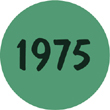
![]() he Big Wheel was such a hit that kids wanted to ride it forever. There was only one problem: There came that inevitable day when the kid had grown too big. Marx, who had built a huge business on the Big Wheel, didn’t want to lose those riders to anything as “ordinary” as a bicycle—perish the thought—and thus came up with the Green Machine.
he Big Wheel was such a hit that kids wanted to ride it forever. There was only one problem: There came that inevitable day when the kid had grown too big. Marx, who had built a huge business on the Big Wheel, didn’t want to lose those riders to anything as “ordinary” as a bicycle—perish the thought—and thus came up with the Green Machine.
Designed and promoted for “guys eight, nine, and ten years old who really know how to ride,” as the commercial proclaimed, this was the toy for the kids who had outgrown the Big Wheel. Though it was marketed specifically to boys, there were plenty of girls dying to rule the sidewalk with this sleek, low-slung three-wheeled beauty.
What made the Green Machine unique, other than its size, was the steering mechanism. Where the Big Wheel had a traditional tricycle handlebar steering, the Green Machine had two levers that moved the back axle. Like the Big Wheel, it took a lot of effort to get the thing rolling, but once in motion it was more responsive and easier to steer. The showy move was the spin, executed by pushing the levers in opposite directions while leaning into the rotation.
As with the Big Wheel, the low center of gravity virtually assured a tip-proof ride. Moms loved any toy that kept their eight-to-ten-year-olds—a notoriously daredevil group—actually safer even when executing dramatic spinouts and stunts. (The idea that a kid would need to wear a helmet or other protective gear on this kind of contraption was still many years away.)
Unlike the Big Wheel, and perhaps because its construction was more sophisticated, the Green Machine was never knocked off the road by other manufacturers.
Today the Green Machine is still made by Huffy, but while the name is the same, it’s not the toy you remember. It’s still got the lever-based steering, but given Huffy’s emphasis on bicycles, it’s more like a recumbent bike with rubber tires and a handbrake. They do make a version that will hold a grown-up, though, just in case you want to revisit your former glory days on the sidewalk.